Divergent trends in lung cancer incidence by gender, age and histological type in Estonia: a nationwide population-based study
- PMID: 28854969
- PMCID: PMC5577806
- DOI: 10.1186/s12885-017-3605-x
Divergent trends in lung cancer incidence by gender, age and histological type in Estonia: a nationwide population-based study
Abstract
Background: Lung cancer (LC) is the leading cause of cancer deaths in men and the second most frequent cause of cancer deaths in women in Estonia. The study aimed to analyze time trends in LC incidence and mortality in Estonia over the 30-year period, which included major social, economic and health care transition. The results are discussed in the context of changes in tobacco control and smoking prevalence. Long-term predictions of incidence and mortality are provided.
Methods: Data for calculating the incidence and mortality rates in 1985-2014 were obtained from the nationwide population-based Estonian Cancer Registry and the Causes of Death Registry. Joinpoint regression was used to analyze trends and estimate annual percentage change (APC) with 95% confidence interval (CI). Nordpred model was used to project future incidence and mortality trends for 2015-2034.
Results: Incidence peaked among men in 1991 and decreased thereafter (APC: -1.5, 95% CI: -1.8; -1.3). A decline was seen for all age groups, except age ≥ 75 years, and for all histological types, except adenocarcinoma and large cell carcinoma. Incidence among women increased overall (APC: 1.6, 95% CI: 1.1; 2.0) and in all age groups and histological types, except small cell carcinoma. Age-standardized incidence rate (world) per 100,000 was 54.2 in men and 12.9 in women in 2014. Changes in mortality closely followed those in incidence. According to our predictions, the age-standardized incidence and mortality rates will continue to decrease in men and reach a plateau in women.
Conclusions: The study revealed divergent LC trends by gender, age and histological type, which were generally consistent with main international findings. Growing public awareness and stricter tobacco control have stimulated overall favorable changes in men, but not yet in women. Large increase in incidence was observed for adenocarcinoma, which in men showed a trend opposite to the overall decline. LC will remain a serious public health issue in Estonia due to a high number of cases during the next decades, related to aging population, and previous and current smoking patterns. National tobacco control policy in Estonia should prioritize preventing smoking initiation and promoting smoking cessation, particularly among women.
Keywords: Age; Gender; Histology; Incidence; Lung cancer; Mortality; Population-based; Predictions; Time trends.
Conflict of interest statement
Ethics approval and consent to participate
The study protocol was approved by the Tallinn Medical Research Ethics Committee (decision no. 284). No consent was required as registry data with no personal identifiers was used. These data were either public or available for research upon request without permission.
Consent for publication
Not applicable.
Competing interests
The authors declare that they have no competing interests.
Publisher’s Note
Springer Nature remains neutral with regard to jurisdictional claims in published maps and institutional affiliations.
Figures
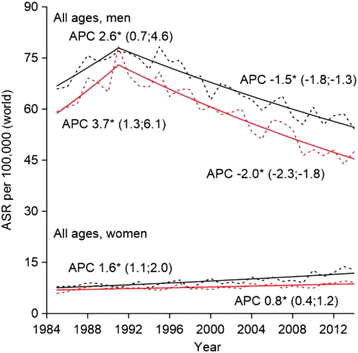
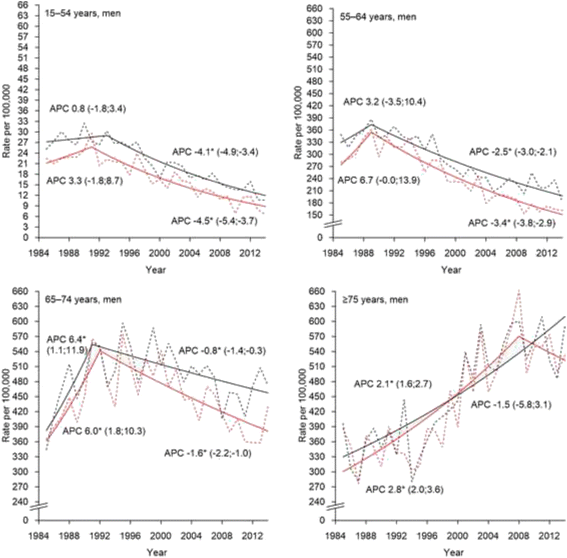
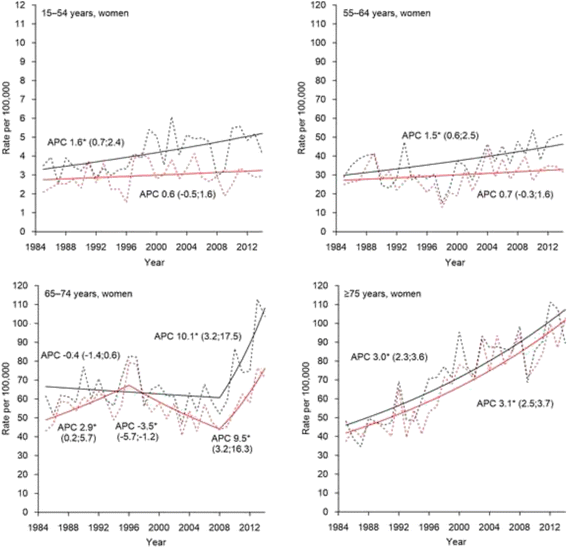
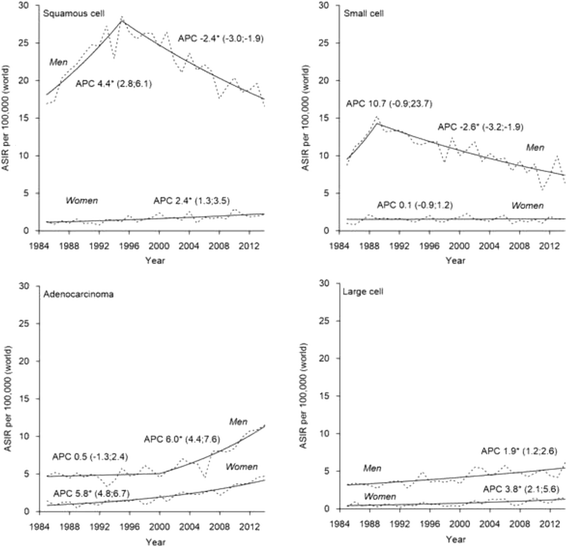
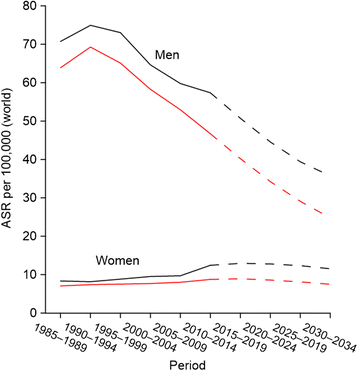
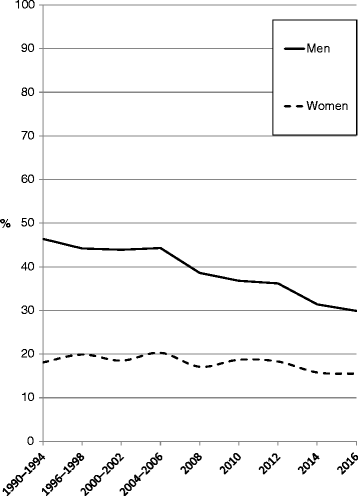
References
-
- National Institute for Health Development. Health statistics and health research database. http://pxweb.tai.ee/PXWeb2015/index_en.html. Accessed 10 Jan 2017.
-
- Ferlay J, Soerjomataram I, Ervik M, Dikshit R, Eser S, Mathers C, et al. GLOBOCAN 2012 v1.0, cancer incidence and mortality worldwide: IARC CancerBase no. 11. 2013. http://globocan.iarc.fr. Accessed 7 Feb 2017.
MeSH terms
LinkOut - more resources
Full Text Sources
Other Literature Sources
Medical

